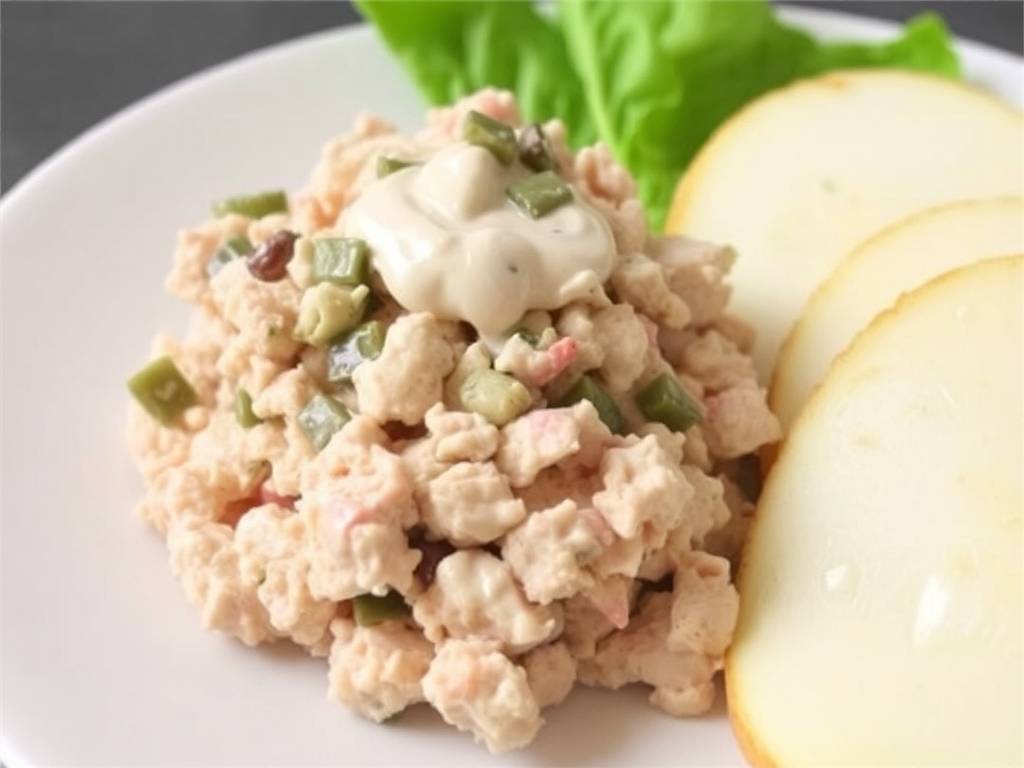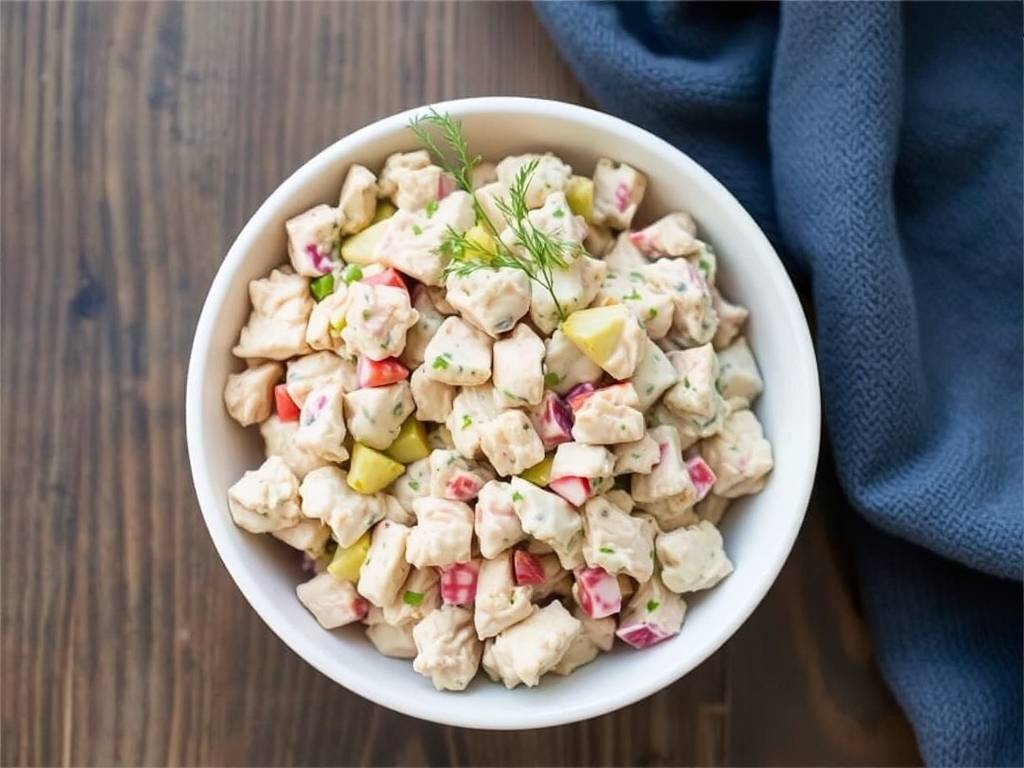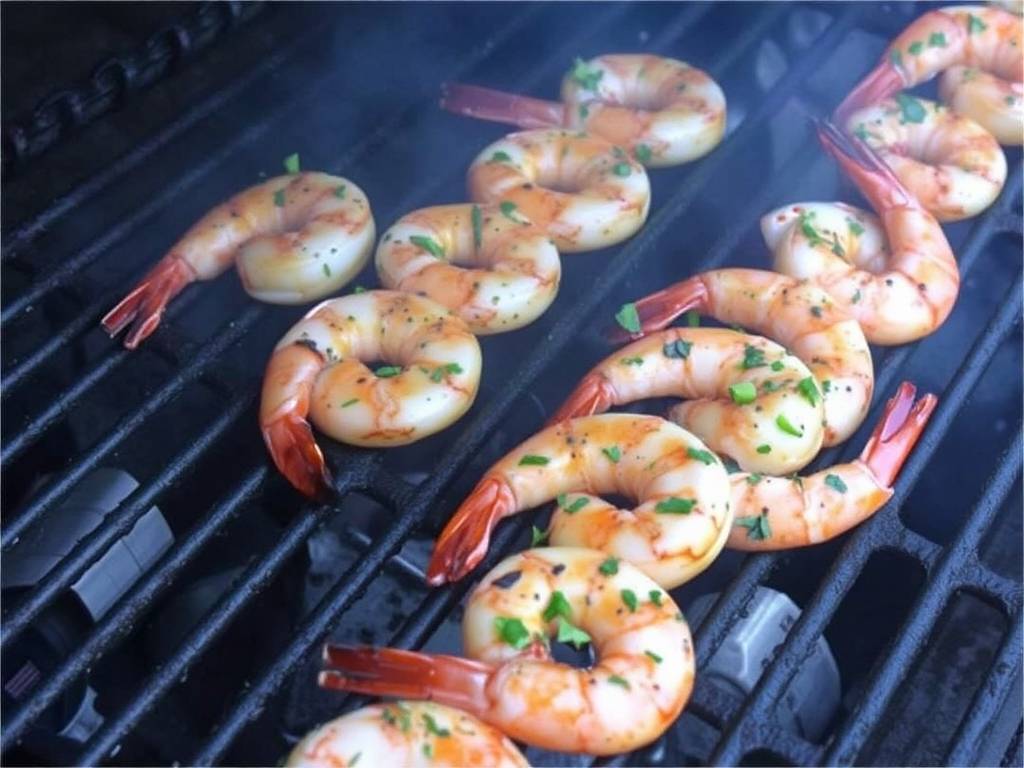The Art of Crafting the Perfect Tuna Salad: A Symphony of Mayo, Dill, and Pickles
Tuna salad. The name itself evokes a sense of simplicity, a humble dish often relegated to quick lunches and picnic baskets. Yet, within this seemingly straightforward combination of ingredients lies a world of culinary potential. A truly exceptional tuna salad is not merely a mixture; it is a delicate balance of textures and flavors, a symphony where the creamy richness of mayonnaise, the briny crunch of dill pickles, and the savory heartiness of tuna play the lead roles. To transform this classic from a mundane necessity into a culinary delight requires attention to detail, an understanding of ingredients, and a touch of artistry. This guide will walk you through the process of creating a tuna salad that is anything but ordinary.
The Foundation: Selecting Your Ingredients

The journey to a perfect tuna salad begins not in the kitchen, but at the grocery store. The quality of your core components will directly influence the final outcome.
-
The Star: Tuna: The first and most critical choice is the tuna. You will find two primary options: tuna packed in water and tuna packed in oil.
- Tuna in Water: This is the most common and leanest choice. It provides a clean, neutral canvas, allowing the other ingredients to shine. Its mild flavor is ideal for those who prefer a lighter salad. When using tuna in water, it is crucial to drain it thoroughly. Press the lid down on the can over the sink to squeeze out as much liquid as possible. For an even drier result, transfer the drained tuna to a plate lined with paper towels and gently pat it dry. Excess moisture is the enemy of a well-textured salad, as it can make the final product watery and dilute the flavors.
- Tuna in Oil: For a richer, more decadent salad, tuna packed in olive oil is a superior choice. The oil imparts a deeper, more complex flavor to the fish itself. When using oil-packed tuna, you do not need to drain it as rigorously; in fact, you can incorporate some of the flavorful oil into the salad in place of a portion of the mayonnaise. This creates a more sophisticated, less "mayo-heavy" profile. Look for high-quality, solid white albacore tuna for the best flaky texture.
-
The Binder: Mayonnaise: Mayonnaise is the glue that holds the salad together and provides its characteristic creaminess. Not all mayos are created equal.
- Store-Bought vs. Homemade: A high-quality, full-fat store-bought mayonnaise like Hellmann's/Best Foods or Duke's will yield excellent results. They have a balanced tang and richness. However, for the ultimate culinary experience, consider making your own. Homemade mayonnaise, emulsified from fresh egg yolks, neutral oil (like grapeseed or a light olive oil), lemon juice, and a touch of mustard, has a flavor and texture that is incomparable to any jarred version. It is lighter, brighter, and far more luxurious.
- The Amount: The quantity of mayonnaise is a matter of personal preference. Start with a conservative amount—about 1/4 to 1/3 cup for two standard 5-ounce cans of tuna. You can always add more, but you cannot take it out. The goal is to coat the ingredients lightly, not drown them.
-
The Flavor Catalysts: Dill Pickles and Beyond: This is where the personality of your salad is defined.
- Dill Pickles: The choice of dill pickle is paramount. Avoid sweet pickles or bread-and-butter varieties, as their sugar content will clash with the other savory elements. You want a genuine, crunchy dill pickle. For the best texture, opt for whole dill pickles that you chop yourself, rather than pre-diced "relish." Relish often contains additives and can be mushy. Chopping your own allows you to control the size of the pieces, ensuring a satisfying crunch in every bite. A fine to medium dice is ideal.
- The Aromatics: The pickle is just the beginning. Finely diced celery is non-negotiable for its fresh, watery crunch. A small amount of finely minced red onion or shallot adds a sharp, pungent kick that cuts through the richness. If raw onion is too strong for your taste, you can soak the minced pieces in cold water for 10 minutes to mellow their bite.
- The Herbs: Fresh herbs elevate the salad from good to extraordinary. Fresh dill is the natural companion to the pickles, its feathery fronds contributing a bright, aromatic flavor. Fresh parsley adds a clean, grassy note. Chop them just before adding to preserve their vitality.
The Technique: Building the Salad
With your premium ingredients assembled, the method of combining them is just as important.
-
Flake the Tuna: Empty the well-drained tuna into a medium-sized mixing bowl. Using a fork, gently flake the tuna apart. Avoid over-mixing or mashing it into a paste. You want to maintain distinct, tender flakes that will absorb the dressing.
-
The Mise en Place: Prepare all your other ingredients—the diced dill pickles, celery, onion, and fresh herbs—and have them ready. This "everything in its place" approach ensures an even and efficient mixing process.
-
Combine Dry Ingredients First: Add the chopped vegetables and herbs to the flaked tuna. Use a fork or a spatula to gently fold them together. This ensures an even distribution before the wet ingredients are introduced.
-
Introduce the Wet Ingredients: Now, add the mayonnaise, starting with a smaller amount. Also add a teaspoon of Dijon mustard for depth and a squeeze of fresh lemon juice (about half a lemon) for brightness. The acid from the lemon juice is essential; it balances the fat of the mayo and enhances the overall flavor profile.
-
Season Thoughtfully: Season with freshly ground black pepper and a careful pinch of salt. Be cautious with the salt, especially if your pickles and mayonnaise are already quite salty. Taste as you go.
-
The Final Fold: Gently fold all the ingredients together until just combined. The goal is a cohesive mixture where every component is coated but still retains its individual identity.
The Resting Period: A Crucial Step
Resist the immediate urge to dig in. Cover the bowl with plastic wrap and refrigerate the tuna salad for at least 30 minutes, or ideally, an hour. This resting period is not merely a suggestion; it is a critical step for flavor development. The chill allows the flavors to meld and harmonize. The sharpness of the onion mellows, the dill infuses its aroma throughout, and the salad becomes a unified, cohesive dish rather than a collection of separate parts.
Serving Suggestions: Beyond the Sandwich

While a classic tuna salad sandwich on soft white or whole wheat bread is a timeless delight, your masterpiece deserves to be explored in various forms.
- The Modern Bowl: For a low-carb option, serve a generous scoop over a bed of crisp mixed greens, accompanied by cherry tomatoes, cucumber slices, and avocado.
- The Elegant Appetizer: Spoon the salad into endive spears or hollowed-out cherry tomatoes for a sophisticated canapé.
- The hearty Crackers: Serve it as a dip or spread with a selection of crackers, from simple water crackers to robust seeded crisps.
- The Stuffed Vegetable: Hollow out a ripe tomato or an avocado half and fill it with the tuna salad for a light yet satisfying meal.
Creating the perfect tuna salad with mayo and dill pickles is a testament to the idea that the simplest dishes often reward the most careful attention. By selecting high-quality ingredients, respecting their individual characteristics, and allowing time for the flavors to unite, you transform a basic recipe into a culinary experience that is both comforting and refined. It is a dish that proves that true artistry lies not in complexity, but in mastery of the fundamentals.






发表评论